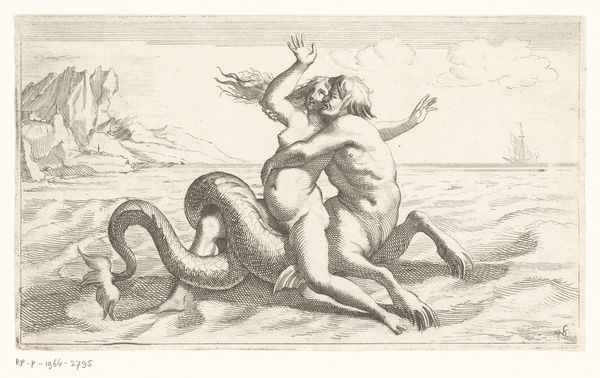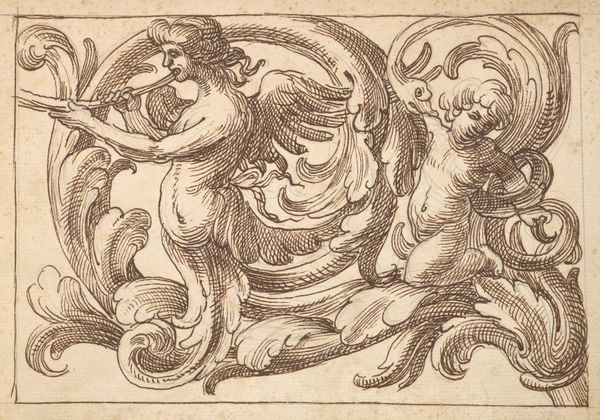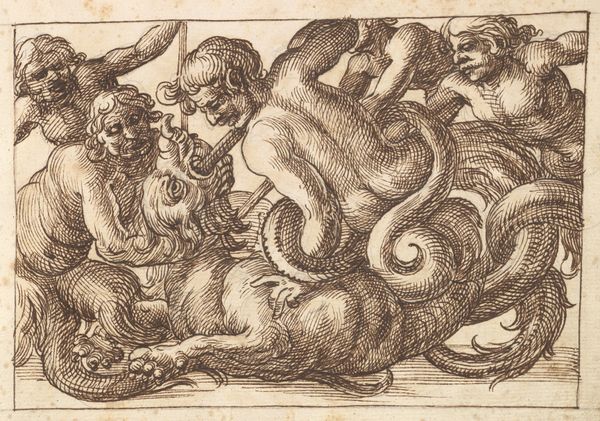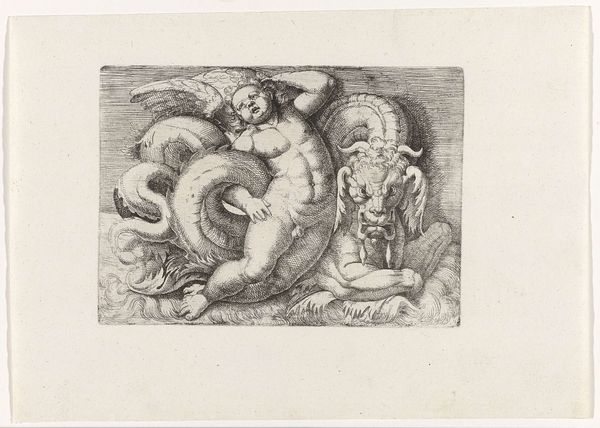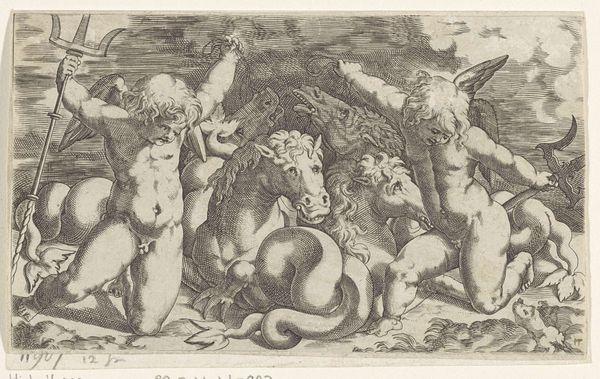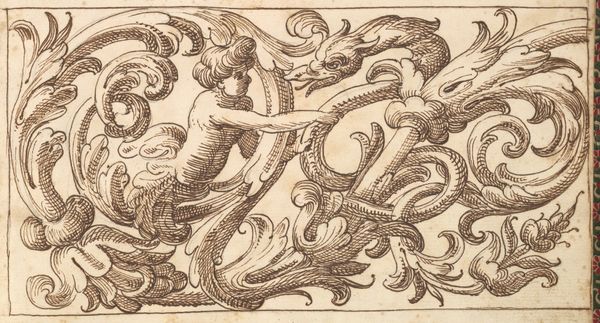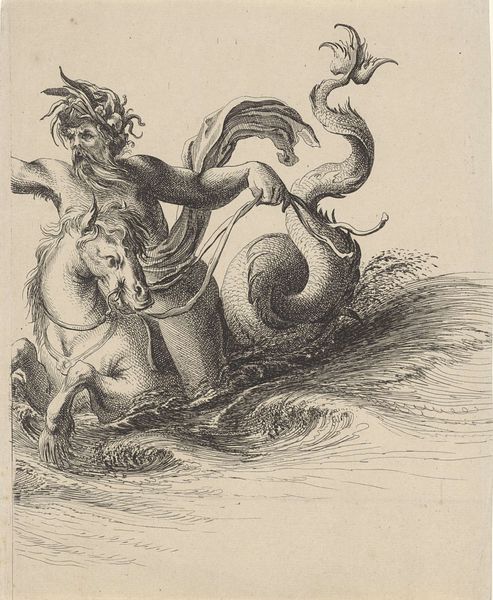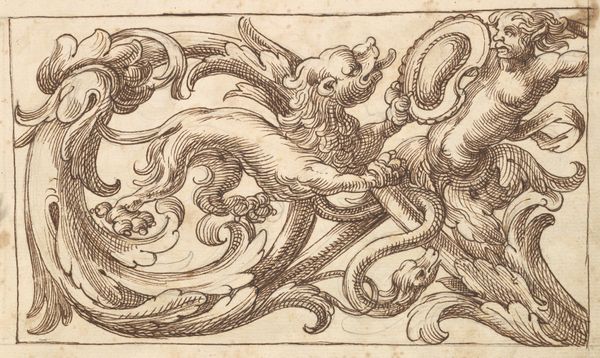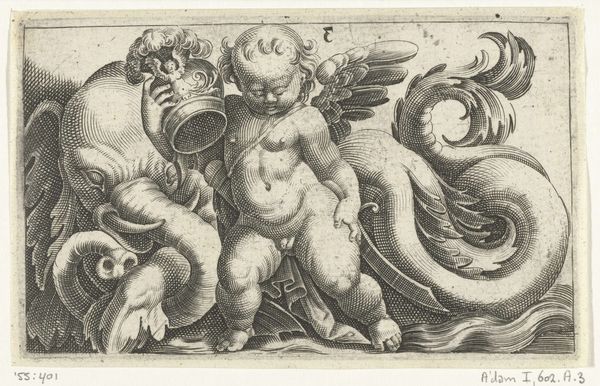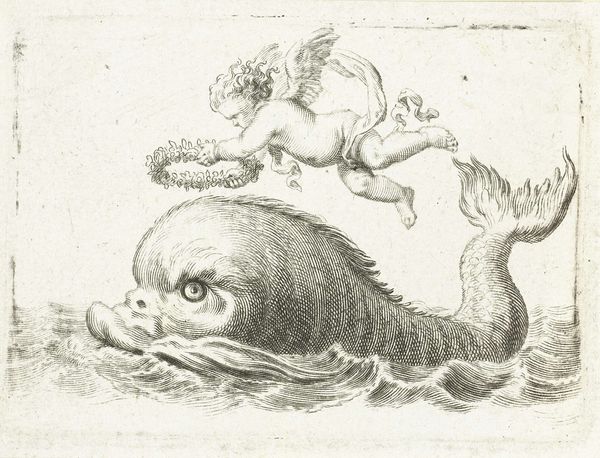
print, engraving
#
narrative-art
#
baroque
# print
#
pen illustration
#
pen sketch
#
figuration
#
mythology
#
engraving
Dimensions: height 129 mm, width 228 mm
Copyright: Rijks Museum: Open Domain
Curator: Looking at this engraving, titled "Triton met vrouw in gevecht met een zeemonster", which translates to "Triton with woman in battle with a sea monster," created between 1628 and 1682, what strikes you most about its presentation here at the Rijksmuseum? Editor: The stark contrast between the fine lines and the chaos of the scene. It's dramatic, isn't it? As if the artist were relishing the struggle right down to the production of each individual engraving. Curator: It’s attributed to Jean Lepautre. Prints such as this one circulated widely, informing and shaping perceptions of classical mythology during that period, acting as a precursor of mass visual media in many ways. We can observe the relationship to established iconography. Notice the figures; what's striking about the mythological content being presented to a broad consumer base? Editor: Well, look at the monstrous creature, meticulously rendered—the scales, the claws—clearly made with great deliberation. This level of detailing probably reflects an accessible, didactic role of this popular piece; maybe this represents control over the untamed. Do you think the consumption of these prints encouraged viewers to think differently about gender roles, class, and religious authority? Curator: It’s quite possible. I believe the dissemination of this engraving contributed to shaping cultural attitudes, popular beliefs, even providing moral lessons to the popular observer. This also promoted specific ideas about human agency as opposed to natural, even supernatural, phenomena. Editor: Looking at the composition now, it seems Lepautre, by virtue of the material form, invited viewers from all classes to project into this miniature play! Curator: Precisely. The print format allowed for a more intimate and accessible engagement with these otherwise grand narratives of conflict. It brought mythology to the masses. Editor: A dynamic, if miniature, rendering of a complex drama, reflecting broader social dialogues. It truly seems we cannot decouple even the smallest material components from those grander stories being passed around. Curator: Indeed. Analyzing pieces like this one compels me to reflect on the power of mass production to mold opinions throughout social spheres. Thank you.
Comments
No comments
Be the first to comment and join the conversation on the ultimate creative platform.

